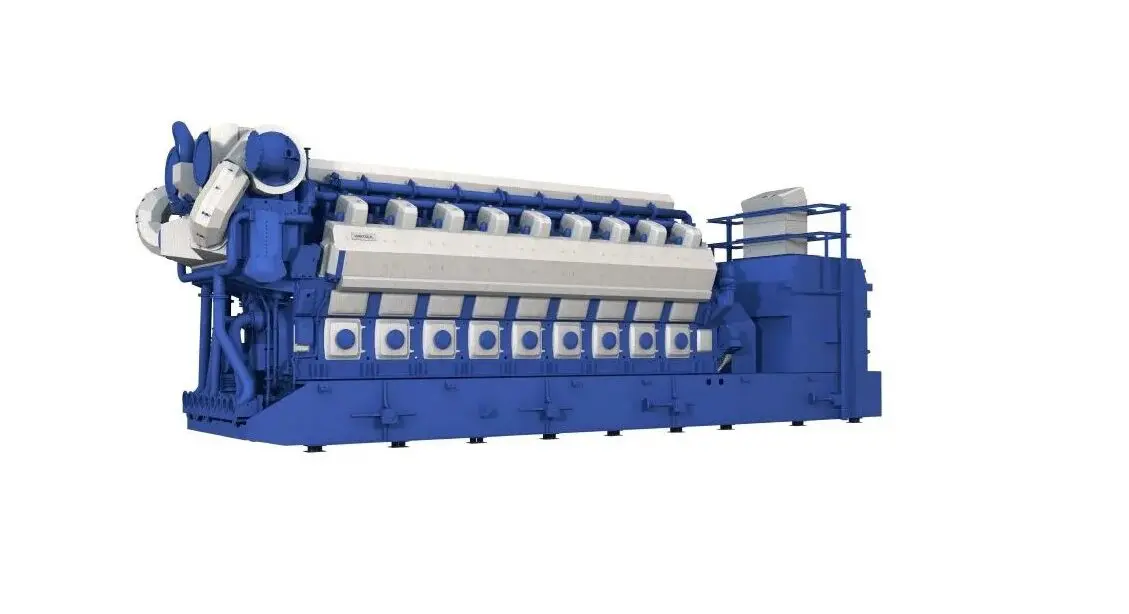
Wärtsilä Engine Runs On 25 vol% Hydrogen Blend

Wärtsilä and WEC Energy Group have successfully tested the capabilities of a Wärtsilä engine running on 25 vol% hydrogen-blended fuel. The tests were conducted at WEC Energy Group’s 55-MW A.J. Mihm Power Plant in Michigan, using an unmodified Wärtsilä 50SG engine. Throughout the testing period, the Wärtsilä engine continued to supply power to the grid.
The Electric Power Research Institute (EPRI) also participated in the tests and led the assessment of the engine’s performance during the testing. EPRI’s analysis confirmed the feasibility of blending hydrogen (H2) with natural gas for use in an existing Wärtsilä engine.
During three days of continuous testing, the capability of the engine to co-fire hydrogen blends was successfully demonstrated, showing improvements in engine efficiency and reduced greenhouse gas emissions, while staying compliant with NOx emissions, the company said. A 95% engine load was achieved with the 25 vol% H2 blend.
The test plan consisted of evaluating engine performance at three loads along with several fuel blends ranging from 10 to 25 vol% hydrogen. For each engine load, a 100% natural gas run served as the baseline to benchmark the engine’s performance and emissions with the blended fuel runs. The test runs conducted during three days of testing are shown in Table 1.

“These tests provide clear evidence that Wärtsilä’s engine technology can deliver future-proof power solutions that make a huge contribution toward decarbonized operations. The results of the testing with a hydrogen/natural gas-blended fuel mix have been outstanding,” said Anja Frada, chief operating officer at Wärtsilä Energy. “We continue developing and futureproofing our engines to run on sustainable fuels and expect to have an engine and power plant concept for operating with pure hydrogen available by 2026.”
“EPRI is accelerating deployment of a full portfolio of clean energy technologies to support a net-zero future,” said EPRI Vice President of Energy Supply and Low-Carbon Resources Neva Espinoza. “This demonstration project with Wärtsilä and WEC Energy Group is significant in showing the potential of hydrogen blending in natural gas-fired engines. The learnings from this project will be shared with the energy industry to further progress toward deep decarbonization targets.”
As utilities increase the use of renewable energy assets, such as wind and solar, opportunities exist to produce hydrogen for long-term energy storage from excess renewable energy. As a fuel, hydrogen burns without producing any carbon species including carbon dioxide. Hydrogen electrolyzer manufacturing capacity sits at nearly 8 GW/year today, but it could exceed 60 GW/year by 2030 based on industry announcements.
“We’re very pleased to explore the potential of this technology as we focus on providing customers with affordable, reliable, and clean energy,” said Gale Klappa, executive chair at WEC Energy Group. “As we bring more renewable energy online, we must ensure we can keep the lights on when the sun is not shining and the wind is not blowing. The results of this project are a strong indicator that these dispatchable units can run on very low- and no-carbon fuels.”









